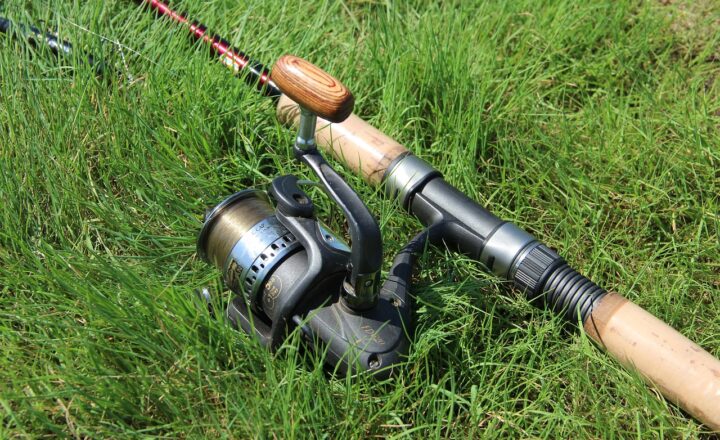Why Fly Fishing Is Considered an Art and the Techniques That Make It Unique
November 12, 2024

Fly fishing is more than just a method of catching fish; it is an art form deeply rooted in tradition, skill, and creativity. For many anglers, the act of fly fishing provides a unique blend of science, sport, and artistry that connects them to nature in an unparalleled way. In this article, we’ll explore why fly fishing is considered an art, delving into the techniques that make it unique and significant to both novice and experienced fishermen alike.
1. The History and Essence of Fly Fishing
The origins of fly fishing can be traced back to ancient civilizations, with references found in the writings of the Roman author Claudius Aelianus around 200 AD. However, its modern reiteration emerged during the 19th century in England, where wealthy gentlemen would fish for trout and grayling using elaborate techniques and handcrafted flies. Since then, fly fishing has evolved into a global pursuit with dedicated enthusiasts who see it as both a sport and an art.
The essence of fly fishing lies in the connection it fosters with nature. Unlike conventional fishing, which often involves heavier tackles and bait, fly fishing uses lightweight artificial flies to mimic the natural food of the fish. This technique requires patience, precision, and a deep understanding of the aquatic environment, all of which contribute to its artistic nature.
2. The Artistic Craft of Tying Flies
One of the most significant aspects of fly fishing as an art form is the process of tying flies. Fly tying involves the meticulous assembly of various materials such as feathers, fur, and synthetic fibers to create a lifelike imitation of an insect or baitfish. This craft has become a skill in its own right, requiring creativity, dexterity, and an artistic eye.
Fly tiers often derive inspiration from nature, using colors, patterns, and textures to enhance their creations. The artistry of fly tying allows anglers to experiment with different designs and techniques, often leading to innovative patterns that rise to popularity among the fishing community.
The aesthetic appeal of the flies themselves adds to the art of fishing; each fly is a unique piece that reflects the tier’s personal style and understanding of their environment.
3. Mastering the Casting Technique
Casting is another area where the artistry of fly fishing truly shines. Unlike regular fishing, where fishers may simply cast a line, fly casting emphasizes graceful movements and precise placements. The ‘double haul’ and ‘roll cast’ are just a couple of techniques that showcase the unique skill set required to fly fish.
3.1 The Double Haul Technique
The double haul technique involves using both hands to create additional speed and distance. This maneuver allows the angler to cast a fly accurately over longer distances, allowing the fly to land softly on the water’s surface, simulating the natural descent of an insect. The rhythm and flow of casting resemble a dance, reflecting the harmony an angler seeks while waiting for a strike.
3.2 The Roll Cast Technique
The roll cast is a fundamental technique that enables anglers to cast in tight spaces, such as under overhanging branches. This technique requires a higher level of control and body awareness, making it a beautiful exercise in both precision and creativity as the angler navigates obstacles while ensuring an effective presentation of the fly.
The beauty of these casting techniques lies not only in their functionality but also in the graceful movements associated with them, making the act of casting a visual art form in itself.
4. Understanding the Environment and Fish Behavior
To become a truly successful fly fisherman, one must have a solid understanding of aquatic ecosystems and fish behavior. This knowledge involves studying water types, insect hatches, and seasonal changes that influence fish feeding patterns.
Artists often draw from their surroundings, and fly fishermen are no different—drawing inspiration from the water, weather, and wildlife they encounter.
Knowing when and where to fish involves not only technical expertise but also an appreciation of nature’s nuances—an essential aspect of fly fishing that enhances its artistic integrity. Observing the world around them enables fishermen to predict fish behavior and select the appropriate fly with more accuracy, fundamentally deepening their connection to the environment.
5. The Zen of Fly Fishing: Meditation in Motion
Many anglers find fly fishing to be a meditative practice—an opportunity to escape from the stresses of daily life while immersing themselves in nature. Each cast becomes a rhythmic motion encouraging mindfulness and promoting relaxation.
The focus required for successful fly fishing fosters a deep connection not only with nature but also with oneself. As anglers observe the water and wait for a bite, they often find moments of reflection and peace.
This aspect of fly fishing amplifies its status as an art form; it transcends mere recreation, evolving into a spiritual experience that resonates deeply with those who embrace it.
Conclusion: The Intersection of Art and Nature
Fly fishing is undeniably an art, characterized by intricate techniques, creativity, and an unyielding appreciation for nature. From the process of tying custom flies to the graceful movement of casting and the deep understanding necessary for effective fishing, each facet of fly fishing reflects a uniquely artistic perspective.
As the sport continues to evolve and attract more enthusiasts, one thing remains constant—the defining connection between fly fishing and art, drawing people into a world where technique and creativity intersect with the beauty of the natural environment. Whether you are a seasoned pro or just starting on your journey, embracing the artistry of this timeless pursuit can lead to a profound and rewarding experience.
So, grab your rod, tie some flies, and immerse yourself in the art of fly fishing; you’ll discover it is more than just a means to catch fish, but a journey into the heart of artistry itself.







